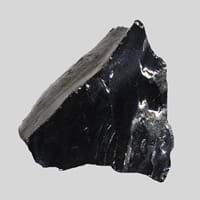Definition
Anthracite is a type of sedimentary rock which is hard and is variety of coal that has high luster
Aplite is a fine-grained granite composed mainly of feldspar and quartz
Origin
Pennsylvania, U.S.
Iran
Discoverer
Unknown
Unknown
Etymology
From Greek anthrakites, from anthrax, anthrak meaning coal
From German Aplit, from Greek haploos simple + -ite
Class
Metamorphic Rocks
Igneous Rocks
Sub-Class
Durable Rock, Soft Rock
Durable Rock, Hard Rock
Group
Not Applicable
Plutonic
Other Categories
Coarse Grained Rock, Fine Grained Rock, Medium Grained Rock, Opaque Rock
Fine Grained Rock, Opaque Rock
Texture
Amorphous, Glassy
Granular, Graphic
Color
Black, Brown, Dark Brown, Grey, Light to Dark Grey
Black, Grey, Orange, Pink, White
Durability
Durable
Durable
Appearance
Veined or Pebbled
Veined or Pebbled
Interior Uses
Not Yet Used
Bathrooms, Countertops, Decorative Aggregates, Entryways, Floor Tiles, Homes, Hotels, Kitchens, Stair Treads
Exterior Uses
Not Yet Used
As Building Stone, As Facing Stone, Bridges, Paving Stone, Near Swimming Pools, Office Buildings, Resorts
Other Architectural Uses
Not Yet Used
Curbing
Construction Industry
Cement Manufacture, for Road Aggregate, Making natural cement, Steel Production
As Dimension Stone
Medical Industry
In Chemical and Pharmaceutical Industry, Manufacture of Aspirins
Not Yet Used
Antiquity Uses
Not Yet Used
Artifacts, Monuments, Sculpture, Small Figurines
Commercial Uses
Alumina Refineries, Electricity Generation, Liquid Fuel, Manufacture of Soap, Solvents, Dyes, Plastics and Fibres, Paper Industry
Curling, Gemstone, Laboratory bench tops, Small Sculptures, Tombstones
Types
Semi-anthracite and Meta-anthracite
Not Available
Features
Helps in production of Heat and Electricity, Used as fossil fuel
Available in lots of colors, Available in Lots of Colors and Patterns, Is one of the oldest rock
Archaeological Significance
Monuments
Not Yet Used
Used
Famous Monuments
Not Applicable
Data Not Available
Sculpture
Not Yet Used
Used
Famous Sculptures
Not Applicable
Data Not Available
Pictographs
Used
Not Used
Petroglyphs
Used
Not Used
Figurines
Not Yet Used
Used
Formation
Anthracite forms from the accumulation of plant debris in a swamp environment. When plant debris dies and falls into the swamp, the standing water of the swamp protects it from decay.
Aplites belong to intrusive igneous rocks which are mostly quart and alkali feldspar and are formed from residual eutectic granitic liquids and represent the final crystallization products of magma.
Mineral Content
Calcite, Clay, Clay Minerals
Amphibole, Biotite, Feldspar, Hornblade, Micas, Muscovite or Illite, Plagioclase, Pyroxene, Quartz
Compound Content
Carbon, Hydrogen, Nitrogen, Oxygen, Sulphur
Aluminium Oxide, CaO, Iron(III) Oxide, FeO, Potassium Oxide, MgO, MnO, Sodium Oxide, Phosphorus Pentoxide, Silicon Dioxide, Titanium Dioxide
Types of Metamorphism
Burial Metamorphism, Contact Metamorphism, Regional Metamorphism
Burial Metamorphism, Cataclastic Metamorphism, Hydrothermal Metamorphism, Regional Metamorphism
Types of Weathering
Not Applicable
Chemical Weathering, Mechanical Weathering
Types of Erosion
Not Applicable
Chemical Erosion, Coastal Erosion, Wind Erosion
Grain Size
Medium to Fine Coarse Grained
Very fine-grained
Fracture
Conchoidal
Not Available
Porosity
Less Porous
Less Porous
Luster
Shiny
Dull to Pearly to Subvitreous
Compressive Strength
Not Available
Cleavage
Non-Existent
Not Available
Toughness
Not Available
Not Available
Specific Gravity
1.1-1.4
2.6
Transparency
Opaque
Opaque
Density
1.25-2.5 g/cm3
2.6 g/cm3
Resistance
Heat Resistant, Water Resistant
Heat Resistant, Wear Resistant
Deposits in Eastern Continents
Asia
Bangladesh, Burma, Cambodia, China, India, Indonesia, Kazakhstan, Malaysia, Mongolia, Pakistan, Turkey, Vietnam
China, India, Iran, Saudi Arabia, Sri Lanka, Taiwan, Thailand, Turkey, Vietnam
Africa
Botswana, Kenya, Morocco, Mozambique, South Africa, Tanzania
Angola, Egypt, Madagascar, Namibia, Nigeria, South Africa
Europe
Belgium, Bulgaria, England, France, Germany, Greece, Hungary, Kosovo, Netherlands, Norway, Poland, Romania, Serbia, Slovakia, Slovenia, The Czech Republic, Ukraine, United Kingdom
Austria, Belgium, Finland, France, Germany, Italy, Norway, Sardinia, Spain, Switzerland, The Czech Republic, Venezuela
Others
Not Yet Found
Not Yet Found
Deposits in Western Continents
North America
Canada, Mexico, USA
Canada, USA
South America
Brazil, Chile, Colombia, Venezuela
Not Yet Found
Deposits in Oceania Continent
Australia
New South Wales, Queensland, Victoria
Not Yet Found
All about Anthracite and Aplite Properties
Know all about Anthracite and Aplite properties here. All properties of rocks are important as they define the type of rock and its application. Anthracite belongs to Metamorphic Rocks while Aplite belongs to Igneous Rocks.Texture of Anthracite is Amorphous, Glassy whereas that of Aplite is Granular, Graphic. Anthracite appears Veined or Pebbled and Aplite appears Veined or Pebbled. The luster of Anthracite is shiny while that of Aplite is dull to pearly to subvitreous. Anthracite is available in black, brown, dark brown, grey, light to dark grey colors whereas Aplite is available in black, grey, orange, pink, white colors. The commercial uses of Anthracite are alumina refineries, electricity generation, liquid fuel, manufacture of soap, solvents, dyes, plastics and fibres, paper industry and that of Aplite are curling, gemstone, laboratory bench tops, small sculptures, tombstones.










